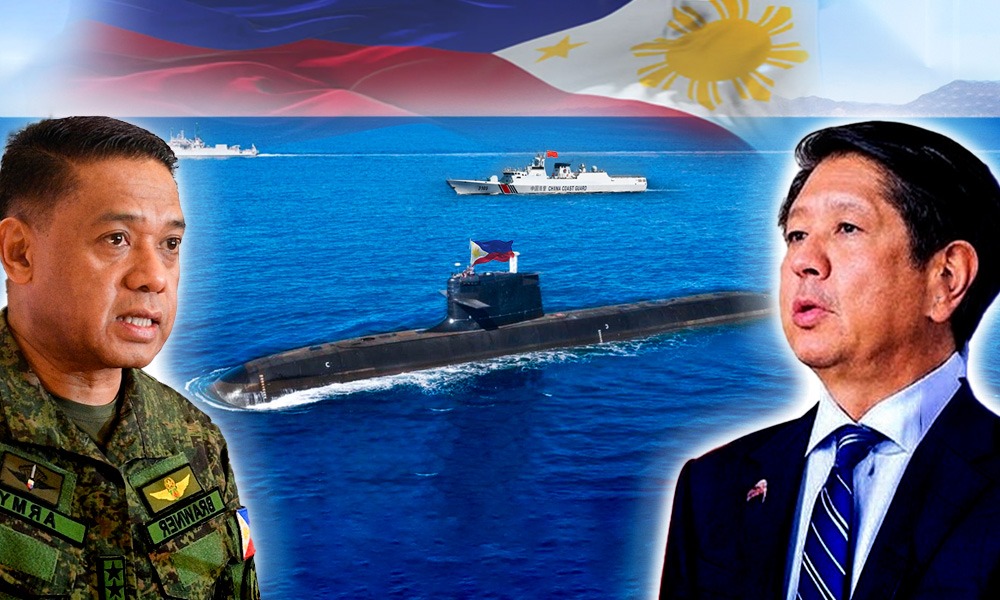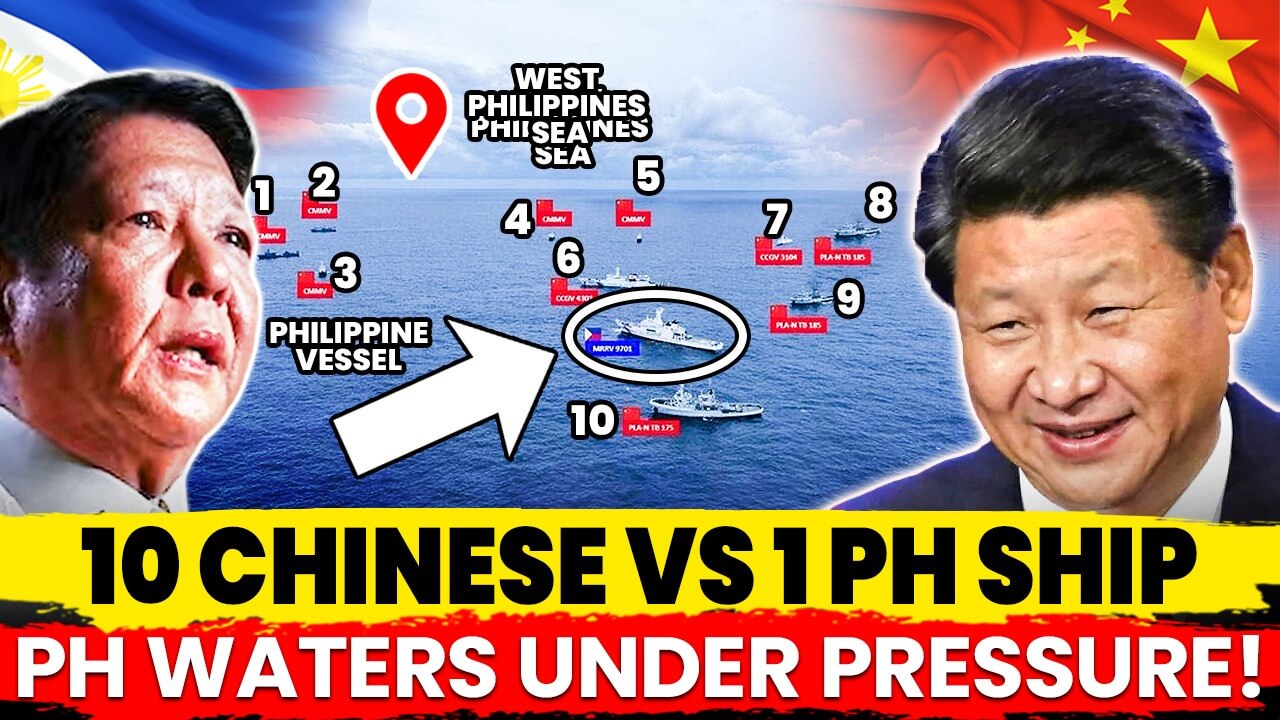Why is the Philippine Navy still blind underwater in 2025?” “This could be the biggest security gap in Southeast Asia and no one’s talking about it.” “In a region swarming with submarines, the Philippines has zero?” In 2025, the Philippine Navy still has zero submarines and that’s a massive red flag. With over 2.2 million square kilometers of ocean territory to protect and constant Chinese incursions in the West Philippine Sea, the absence of even a single sub leaves the country dangerously exposed beneath the waves. Every other maritime neighbor, Vietnam, Indonesia, even Malaysia, has underwater eyes and teeth. Meanwhile, the Philippines? Still watching from the surface. It’s not just a gap in defense, it’s a blind spot in a region where silent warfare decides who stays and who gets pushed out. The truth is, without submarines, we’re playing checkers in a region playing 3D chess underwater.
Strategic Alteration: The Role of Submarine Acquisition (Horizon 3)
Under the Philippine military’s Re-Horizon 3 modernization roadmap, a historic transformation is finally underway, the country is set to acquire at least two diesel-electric submarines, a bold step that could permanently shift its maritime defense posture. This isn’t just about new assets; it’s a complete rethinking of how the Philippines plans to defend its 2.2 million sq km of maritime territory. With Chinese vessels increasingly breaching the West Philippine Sea, the stakes are high, and the absence of any submarine force has become a glaring strategic vulnerability. That’s why the government is putting up a serious investment: ₱80 to ₱110 billion (roughly $1.38 to $1.9 billion USD) has been allocated, reflecting a national commitment to stop merely reacting, and start deterring. AFP Chief Gen. Romeo Brawner Jr. summed it up when he said, “Hopefully, it’s a dream for us to get at least two submarines,” a dream that’s now backed by political will, defense planning, and funding.
But the plan doesn’t stop at acquisition. What makes this shift truly strategic is that the Navy is already preparing for submarine operations before the vessels even arrive. A robust Anti-Submarine Warfare (ASW) foundation is being laid in parallel. Flagships like the BRP Jose Rizal (FF-150) and BRP Antonio Luna (FF-151) are now equipped with hull-mounted sonar and ASW torpedoes, while AW-159 “Wildcat” helicopters provide air-based submarine hunting capability. This layered defense model ensures the entire force can support and protect submarines while detecting threats under the surface, a critical multiplier that gives the Philippines both offensive reach and defensive awareness in contested waters.
Currently, the Navy has relied on “stopgap” tools like maritime drones and US-supplied T12 Manta unmanned surface vessels (USVs) for coastal surveillance. While effective for monitoring and ISR (intelligence, surveillance, reconnaissance), these platforms are inherently limited, they can’t strike, they can’t hide, and they’re vulnerable. The arrival of submarines marks a permanent shift from temporary tech fixes to true undersea dominance. Unlike drones, submarines offer something unique: persistent, stealth-based presence. They can stay hidden, gather intel, monitor adversary movements, and, if necessary, strike without warning. It’s not just a platform upgrade; it’s a doctrinal leap forward.
What makes this leap possible is international defense cooperation. Both France’s Naval Group, which offers the combat-tested Scorpène-class submarine, and South Korea’s Hanwha Ocean (formerly DSME), which pitches its proven Chang Bogo-III (Dosan Ahn Changho-class) platform, are courting the Philippines. But this isn’t just about selling submarines, it’s about transfer of technology, training, financing, and long-term maintenance support. These partners are offering local shipyard collaboration, sustainment packages, and even flexible payment terms. That means the Philippines isn’t just buying subs, it’s building the infrastructure and skills to sustain them for decades. Bases are already being evaluated in Subic and Palawan, adding strategic positioning to the plan.
All of this adds up to something far more significant than a fleet addition. This is a strategic alteration, a shift from a surface-only defense mindset to a future where the Philippines can patrol the depths, impose risks on aggressors, and operate with confidence in one of the world’s most contested maritime regions.
US Support: Facilitating the Defense Transformation
The transformation of the Philippine Navy’s defense posture, especially its long-awaited entry into submarine warfare, isn’t happening in isolation. The United States is playing a quiet but crucial role in making this leap possible. Through the Enhanced Defense Cooperation Agreement (EDCA), US forces now have access to nine Philippine military bases, including new sites in northern Luzon and Palawan, right on the doorstep of contested waters. These aren’t just airstrips or barracks; they’re strategic nodes. For future Philippine submarines, this means logistical support, real-time intelligence sharing, and more frequent joint training exercises, especially with top-tier US Navy submarine units. One standout move: the US is building a new maritime facility in Quezon, Palawan, aimed specifically at supporting small watercraft operations. This directly feeds into forward operations, resupply, and repair support, key for any submarine fleet.
Even though the Philippines doesn’t yet own submarines, it’s already operating under a powerful security umbrella. The US maintains a strong underwater presence in the Indo-Pacific, including nuclear-powered fast-attack subs like the USS Toledo, now assigned to Submarine Squadron 7. While these aren’t Philippine assets, their presence serves a dual purpose: regional deterrence and strategic cover. With six nuclear submarines currently operating in the region, the US Navy’s underwater intelligence and patrols help stabilize the environment, giving the Philippines breathing room to build and train its own capabilities without facing constant escalatory threats alone.
But this isn’t just about presence, it’s about partnership and preparation. Through exercises like Balikatan and Kamandag, Philippine forces are training side-by-side with the best in undersea warfare, refining tactics, and learning the command-and-control systems that modern submarine operations demand. Navy chief Vice Adm. Jose Ma Ambrosio Ezpeleta has been in direct talks with US Rear Adm. Christopher Cavanaugh to deepen cooperation in anti-submarine warfare (ASW) and uncrewed maritime systems, key enablers for a lean but lethal sub force. And looking forward, the 2025 Joint Vision Statement on U.S.-Philippine Defense Industrial Cooperation makes clear where this relationship is headed: toward tech transfer, logistics integration, and maintenance self-sufficiency. From drones and sensors to dry dock support, the US is helping the Philippines not just buy submarines but build the capacity to operate, maintain, and defend with them for the long haul.
The Philippines: Southeast Asia’s Hidden Economic Giant Set to Soar by 2039!
Altering Geopolitical Dynamics & Meeting Challenges
The Philippines’ move to acquire submarines isn’t just a military upgrade, it’s a geopolitical reset. With China now operating the world’s largest navy, boasting over 370 surface ships and 60+ submarines, the balance in the West Philippine Sea has tilted heavily toward Beijing. But submarines give the Philippines a vital equalizer: an asymmetric, hard-to-detect weapon capable of disrupting, deterring, and denying. This new capability enables a sea denial strategy, quietly tracking enemy movements, gathering intel, and, if needed, launching a precise strike. It changes the rules. Now, any aggressive maneuver by China’s navy or maritime militia inside the Philippines’ Exclusive Economic Zone (EEZ) will come with far greater risk. It’s no longer a one-sided threat, it’s a contested space.
Beyond tactics, this shift carries enormous symbolic weight. Submarines are more than tools of war—they’re symbols of sovereignty. With them, the Philippines can enforce its maritime claims more confidently, project a persistent presence in the West Philippine Sea, and stand its ground in disputed zones where surface ships alone fall short. Instead of reacting to intrusions, the country can now watch silently, interdict covertly, and speak from a position of real strength, militarily and diplomatically.
But this transformation comes with challenges. The Re-Horizon 3 modernization plan, set to span the next decade and costing upwards of $35 billion, demands consistent funding, political focus, and long-term commitment, not just from defense planners, but from the nation’s leadership and public. Delays, leadership changes, or budget cuts could all stall progress. The path won’t be smooth, but it’s essential. Because in a region where control of the sea often determines control of the future, the Philippines must now decide: continue as a vulnerable observer, or evolve into a credible naval force ready to shape its own fate.
Voices on the Transformation
Behind the steel, sonar, and strategy of the Philippines’ submarine ambition lies a chorus of voices, leaders, strategists, and defense veterans, all echoing one urgent message: this transformation is not optional, it’s essential. “We are an archipelagic nation, so we have to have this capability because it is extremely difficult to defend our vast maritime territory without submarines,” declared Gen. Romeo Brawner Jr., AFP Chief of Staff, in early 2025. His words cut through the noise of budget debates and geopolitical friction, this is about survival, sovereignty, and smart deterrence. In the same breath, Brawner called it a dream: “Hopefully, it’s a dream for us, to get at least two submarines.” A dream, yes, but one grounded in rising tides of reality, and a changing battlefield beneath the sea.
For retired Rear Adm. Rommel Jude Ong, former vice commander of the Philippine Navy, the value is tactical and economic: “A submarine capability allows the Philippines to work on a cost imposition strategy, targeting Chinese vulnerability: its international trade, which is dependent on the sea.” In simple terms, subs don’t just defend; they threaten the lifeblood of regional giants who underestimate small nations. That’s deterrence in its most potent form: quiet, invisible, and credible.
But no navy builds submarines alone. Rear Admiral Roy Vincent Trinidad, Navy spokesperson, underscored the vital role of alliances: “The AFP supports any effort by our partner nations, like-minded nations, to increase our capability not only for operations but even for support and sustainment.” From shared training to long-term maintenance, the path to an undersea fleet is a collaborative one, built on trust, interoperability, and shared vision. These voices don’t just tell a story, they reveal a national transformation in motion, with depth, urgency, and a clear direction forward.



